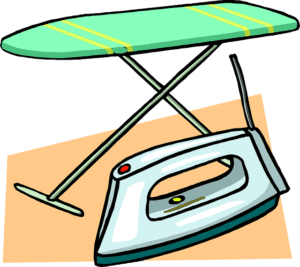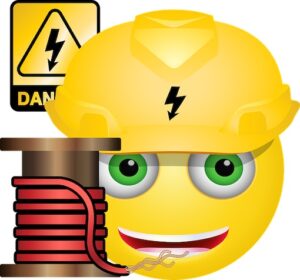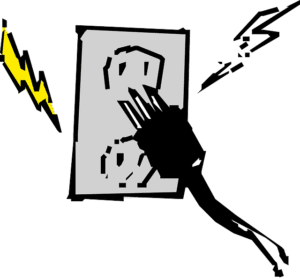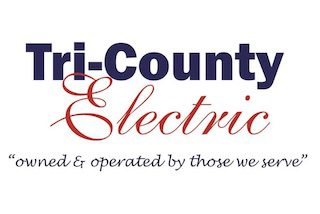Home Electric Safety
Practice Electric Safety Measures at Home
Any time you plug something into a socket, there are safety concerns that you should understand. Some of the most common hazards can be avoided by knowing what your wiring is supposed to handle and using the correct outlets, plugs and extension cords.
Why do they say you should not use extension cords on toasters and irons?
 Most household extension cords are rated for 7-10 amperes (amps). Toasters and irons often draw considerably more current, 10-12 amps. Since most household circuits are fused to “blow” or “trip” at 20 amps, they won’t trip even though the appliance is drawing more current than the cord should have put through it. Result – the extension cord is overloaded and can become overheated.
Most household extension cords are rated for 7-10 amperes (amps). Toasters and irons often draw considerably more current, 10-12 amps. Since most household circuits are fused to “blow” or “trip” at 20 amps, they won’t trip even though the appliance is drawing more current than the cord should have put through it. Result – the extension cord is overloaded and can become overheated.
What is the purpose of polarized plugs?
Polarized plugs assure that when the switch is off, the electricity is turned off just as it enters the appliance. Otherwise, the appliance can have electricity inside even though the switch is not turned on.
Some extension cords are 2-wire or not polarized. What happens when you use these with grounded or polarized outlets?
Plugging a 2-wire appliance into an outlet that has the grounding feature of the third hole means that you appliance will lose the grounding or polarizing protection provided by a 3-wire plug/outlet combination.
What are the little plastic covers I see attached over the plug holes on newer extension cords?
New extension cords will arrive with plastic plugs covering the outlets. These are to prevent injury to small children who sometimes put the end of energized extension cords in their mouths. Keep these plastic covers in the holes not being used and; in general, be especially careful with extension cords around small children.

Should extension cords be run under rugs or carpet to prevent tripping?
Electrical wiring and extension cords should never be placed under a rug. Although that installation will prevent tripping, it is not a good idea. If the cord should become worn or if it overheats, it could become a fire hazard.
Sometimes I see an arc when unplugging an appliance. Is this normal?
Sparks that happen when you unplug an appliance is called arcing The Arc is caused by breaking the flow of current at the plug. It can be prevented by turning the appliance off prior to unplugging. If the appliance does not have a switch, you may expect to see a spark when unplugging it.
What is GFCI and how does it protect me?
A Ground Fault Circuit Interrupter detects tiny amounts of stray current and shuts off the electricity before it can cause harm. A GFCI is much more sensitive to a problem than a fuse or standard circuit breaker. 
What circuits in the home should be GFCI protected?
Ground Fault Circuit Interrupters or GFCI outlets should be used in damp areas of a home. These would include bathrooms, kitchens, garages and outdoor receptacles.
Should I unplug appliances when not in use?
Unplugging appliances or devices when not in use is not practical for all appliances but is a good idea for irons, toasters and those appliances that heat up or get used infrequently. Remember, don’t pull on the wire; grip the plug itself when unplugging something.
If extension cords and various types of adapters are unsafe, why are stores allowed to sell them?
 UL rated extension cords are designed to support different types of devices. Used properly, these cords are safe. However, overloading the cord with appliances or devices that draw more power than the extension cord is rated to supply can cause the cords to become overheated.
UL rated extension cords are designed to support different types of devices. Used properly, these cords are safe. However, overloading the cord with appliances or devices that draw more power than the extension cord is rated to supply can cause the cords to become overheated.
